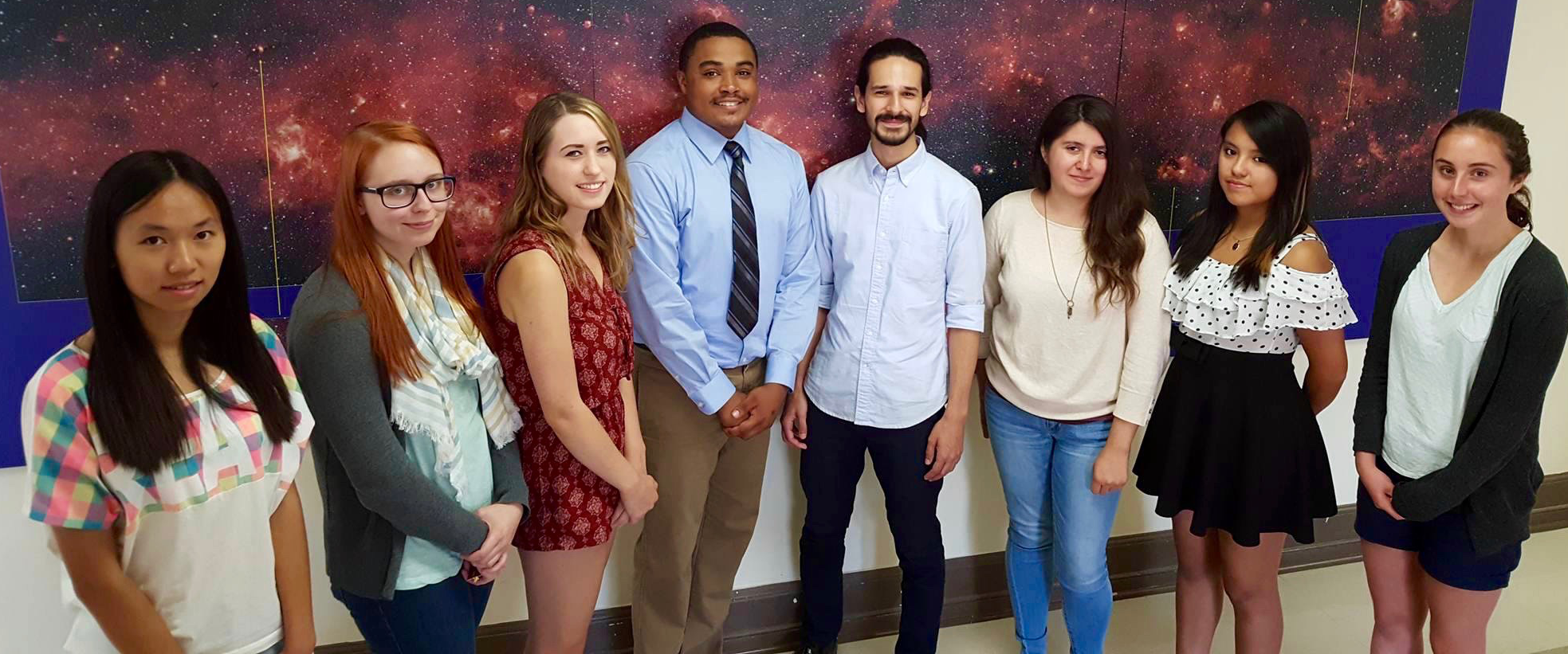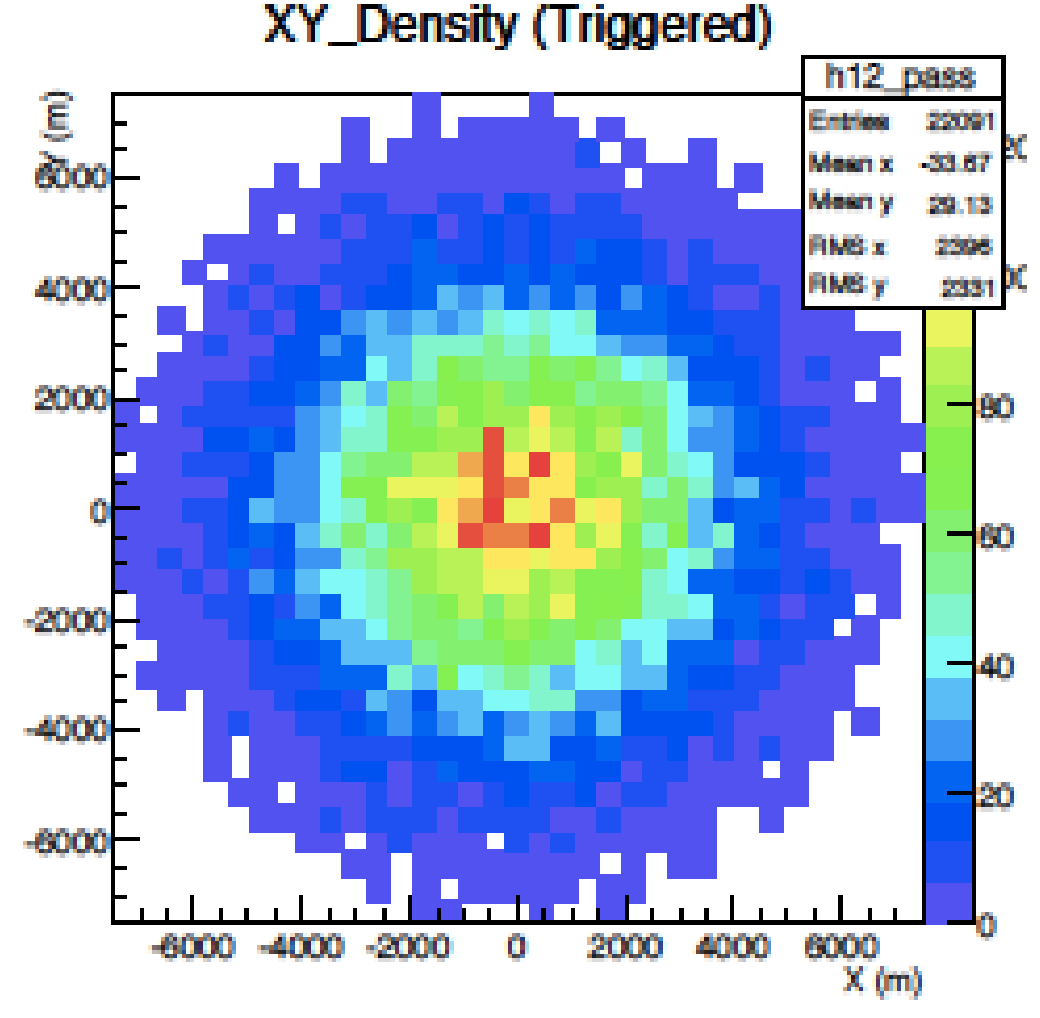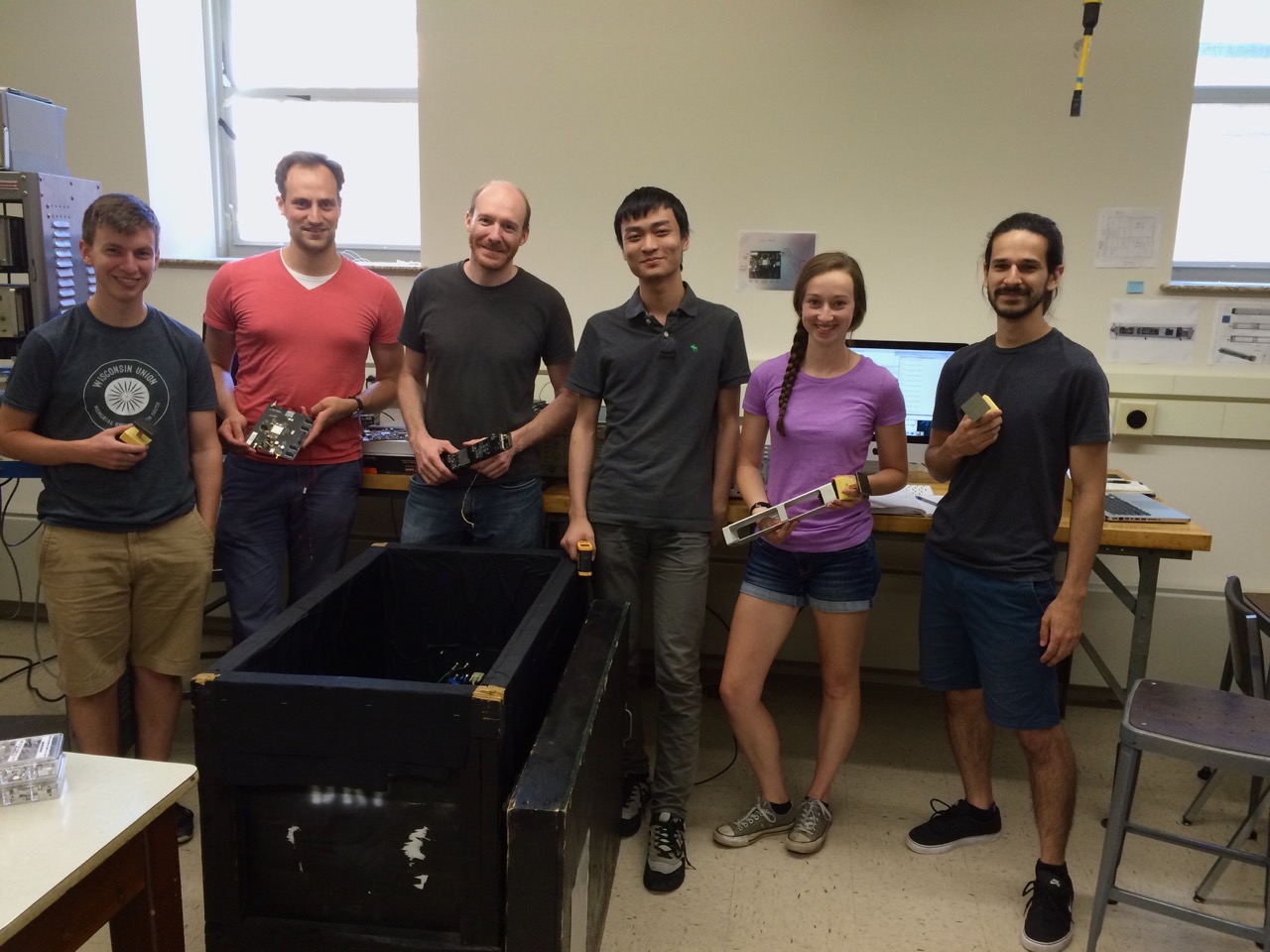During the last 15 years, the astronomy department and the astrophysics group of the physics department at UW–Madison have been challenging undergraduate students from all over the U.S. with cutting-edge research projects. These Research Experiences for Undergraduates (REU) activities are funded by NSF and offer 10 weeks of summer research in several topics in astronomy and astrophysics. Each year, they bring to Madison about 10 outstanding students from colleges in the U.S., many of them from underrepresented communities.
This summer, two of them worked with WIPAC, and we have talked to them to learn about what brought them to Madison and what they are now taking back with them.
Gretel Mercado is originally from California and is currently enrolled at the University of California, San Diego. Roberto Moncada grew up in Miami and moved to New York to study at the City College of New York. They are both planning to major in physics, and after working with them, we have great expectations for their future in science.

Q: Let’s start at the beginning. Why did you choose Madison for your REU summer?
Gretel (G): Well, I was looking for a summer research program, and I came across the UW–Madison REU program on the NSF site. I thought it was a perfect match because not only was it in a state that I really wanted to visit but also I could engage in particle astrophysics research. This was a topic I was really interested in and had not had a chance to work in yet. I was also encouraged by UW Madison’s renown as a leading public research institution and especially by their eminent role in neutrino physics.
Roberto (R): Same here. I thought UW–Madison was full of exciting projects. The one that really caught my eye was IceCube, but I knew there would be many more to learn about. It looked like a place very rich in science. I just wanted to immerse myself in it, and I immediately knew that I had made the right call! The weekly seminars satisfied that need to explore the field. The chance to work on the Cherenkov Telescope Array was an honor. Also, it’s cool to tell people you’re working on a gamma ray telescope. Cue the Hulk references.
G: And, you know, learning a bit about Madison really sealed the deal for me—it seemed like a great city with a nice balance of big-city comforts and a small-town feel.

Q: Tell us a bit more about your projects and the work you did this summer?
R: I worked with Justin Vandenbroucke on the Cherenkov Telescope Array (CTA), specifically with the camera modules for a telescope prototype. I had never worked with actual instruments before. To tell you the truth, it took me a while to understand what was going on at first. But, once I figured out how to use it, the setup was really nice to work with!
G: I worked with the Askaryan Radio Array project, a.k.a. ARA, testing different detector geometries and how they could affect the reconstruction of the direction of very high energy astrophysical neutrinos. For me, the main challenges, apart from getting used to working with the simulation programs I was using, actually dealt with technical problems with those programs. The reconstruction program I was using was not working as well as we would have hoped, and I spent a lot of extra time working around the problem. However, I did eventually obtain results, albeit rather surprising ones.
R: In my case, the toughest parts were mostly the analyses of the nice data that the camera module was producing. After attacking one of the studies from multiple angles, I felt like I was running out of ideas. And this is when I learned that it is nice to have a talented team beside you to help out. The results are still inconclusive, but we are now aware of some limitations on the instrument that are important to keep in mind for future studies.

Image: Jozef Trokan-Tenorio.
Q: Now that you’ve mentioned the team, can you tell us a bit more about the working environment?
G: I really enjoyed the working environment at WIPAC. I had weekly meetings with my advisor, John Kelley, and he was always available and willing to provide guidance whenever I needed it. I also worked closely with Ming-Yuan Lu, a graduate student who was available most days and eagerly aided me with a lot of technical details. It was great to know that I always had someone friendly and supportive to turn to for answers to any questions I might have and to guide me through my research project.
R: My experience is pretty similar. I worked in the lab with two other students that attend UW–Madison—Colin Adams and Rachel Fedora—and Thomas Meures, who is a physicist now working as an engineer. We all had our own projects to work on, but we would frequently help one another as needed. All of us had to share the nice dark box that housed the setup with the camera module and LED flasher. That was definitely not a problem with this bunch, since they are some of the most organized people I have ever met. We frequently met with Justin to catch up and keep moving forward. I thought it was cool that we also had regular conference calls with other scientists around the world that are also working on the CTA project. It is such a huge collaboration!
Q: And what’s next? Is graduate school in your future plans?
G: I definitely plan on applying to graduate school. My research this summer has allowed me to reaffirm my interest in astrophysics and particle physics. I haven’t narrowed my interests to a specific experiment, although I have become quite fond of neutrino physics. Regardless, I still have time to continue to explore in depth other topics that interest me in these two fields.
R: Yes, I plan on attending graduate school, too. I’m fascinated by high-energy astrophysics. I’ve been exploring the field since last summer, when I worked on a project involving ultra-high-energy cosmic rays. CTA has broadened what the field means to me. Before hearing about ARA, the High-Altitude Water Cherenkov (HAWC) observatory, or even CTA, I would have said that I wanted to work with the IceCube Collaboration. But this summer I have learned about different but equally intriguing projects. I feel lucky to have learned much more about the field.
Q: How did your interest in science ignite? Can you point to someone, or something, that made a difference?
R: I would say my sister; she had a huge influence on my level of patience and curiosity as a kid. But, I didn’t feel a spark until I took physics in high school. I’m sure it wasn’t the first time I was expected to set up an experiment, but it was the first time I drew the connection between the math of physics and the results of an experiment. Witnessing that predictive power left a lasting impression on me. At that point, I just thought it was thrilling. Science is nice because you are guaranteed to find something interesting to work on as long as you are curious.
G: I’m not sure if there is a specific experience that ignited my passion for science, although I do remember that I received this large book on astronomy when I was about four years old. It was almost taller than me! I decided then that my favorite planet was Saturn, and I still stick to that today. I’ve enjoyed all fields of science since I was young—biology, geology, etc.—but I guess my passion for physics began when I took my first high school physics course and realized it was the easiest class for me because I enjoyed it so much. During that course, I first discovered quantum theory from a small book that I found in my hometown’s library, and since then I’ve developed a keen interest in modern physics, and especially in particle physics.
Q: It’s great to hear about your experiences and your passion for physics. Any suggestions for an undergraduate student considering an REU at UW–Madison?
R: Do your research, and find out which projects interest you the most. Your application should reflect your interests and how an REU with UW–Madison would be a great fit. Make sure to convey how you are trying to involve yourself in whatever field you are interested in. And, while you’re in Madison, please visit the UW Arboretum. It is just beautiful.
G: Although I can’t speak for REU programs at other schools, I can say that really great opportunities and memories await those who choose the astronomy REU at UW–Madison. For those students on the fence about doing so, I would definitely suggest giving UW–Madison a chance. The unique combination of working on amazing research at a world-class institution and living in a city that has so much to offer is really something that should not be passed up that easily.
And after having heard from them, we were curious about what their mentors thought about Gretel and Roberto. As expected, they also had only good things to say.
“I mentor REU students because they bring a fresh beginner’s perspective to the research and are fun to work with,” said Justin Vandenbroucke, a physics assistant professor at UW–Madison and the PI of the CTA group. “It was great to see how well Robert worked with others in our group—this was gratifying and made my work easy!”
“One afternoon I learned that after working a long day in the lab, Robert and Colin were starting an Arduino project in the evening. I started my career in particle astrophysics with undergraduate research, and I’m happy to support others doing the same. There are good places for undergrads to contribute to the scientific questions, data analysis, and hands-on hardware work in the field and in the lab,”explained Vandenbroucke.
“Working with Gretel this summer was both productive and enjoyable,” said John Kelley, who works in GPU algorithms for ARA radio signals. “Within a few short weeks, she was simulating ultra-high-energy neutrino interactions at the South Pole and reconstructing their direction and interaction location. Gretel’s analysis showed how a larger antenna spacing in ARA could benefit our resolution and at what spacing the benefits start to break down,” added Kelley.
He explained that engaging REU students like Gretel has been rewarding in several ways. “Not only are we able to make progress on specific research questions, but bringing in new energetic people and their ideas to the group keeps us on our toes. And from my own experience, I know how much difference a positive exposure to research can make when considering a career in science, and I’m eager to share that with others,” said Kelley.
